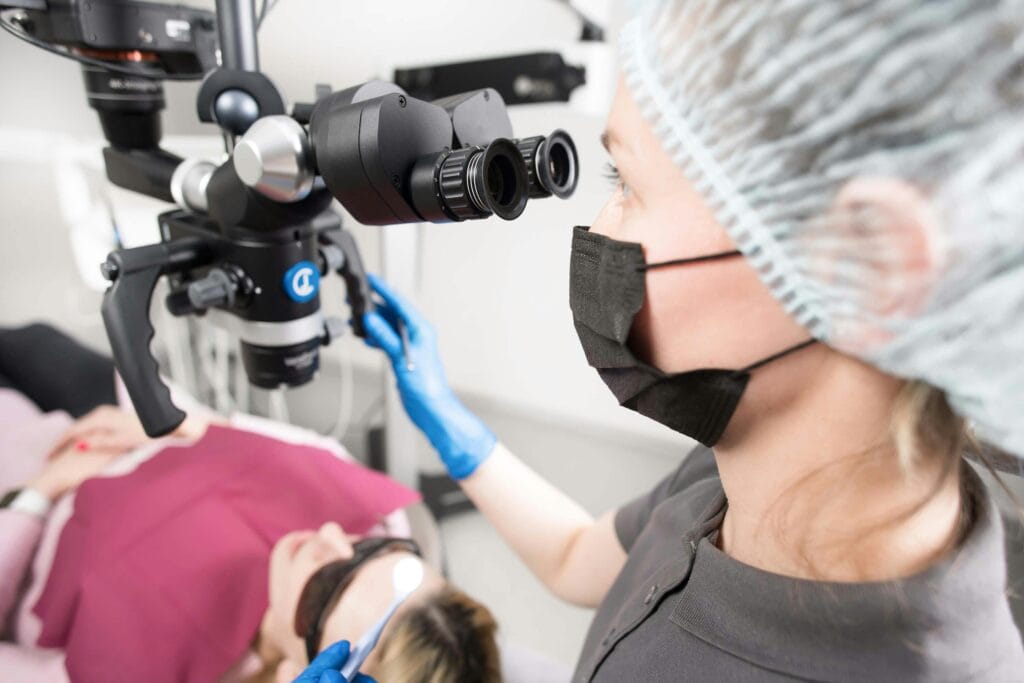FREE SHIPPING OVER $50
Before You Book That Root Canal—Here’s What You Need to Know About Safer, Easier Options

The dentist’s words hang in the air like a storm cloud: “You need a root canal.” Your mind races. You instantly picture the procedure, the pain, the multiple visits, and the cost. A root canal is one of the most feared and misunderstood dental procedures, and for many, the diagnosis feels like a last resort—a foregone conclusion that they have no choice but to accept.
But what if you didn’t have to? What if you had other options to consider, less invasive procedures that could still save your tooth? While a root canal is often the most effective and necessary treatment, the truth is that dental technology and knowledge have advanced, offering a range of alternatives. Before you book that appointment, you need to arm yourself with the right information. By understanding the science of your specific situation and the new treatments available, you can feel empowered to have a real conversation with your dentist and make the best decision for your oral health.
Understanding the Problem: Why Your Dentist Recommended a Root Canal
The reason a root canal is recommended is often due to a condition called pulpitis, which is the inflammation or infection of the dental pulp. The dental pulp is the soft tissue inside your tooth that contains blood vessels, nerves, and connective tissue. It’s what keeps your tooth alive and healthy.
When decay or an injury reaches the dental pulp, it becomes inflamed and can get infected. The symptoms of this can range from mild sensitivity to hot and cold to severe, throbbing pain. If left untreated, the infection can spread to the jawbone, leading to a serious abscess. A traditional root canal works by removing the infected pulp from inside the tooth, cleaning out the canals, and then sealing them to prevent further infection. This saves the tooth from extraction, which is why it has long been the gold standard for treating this type of problem.
But in some cases, the infection or damage to the pulp is not severe enough to warrant a full root canal. This is where the more conservative, less invasive alternatives come into play.
The Science of Saving Your Tooth: Alternatives to a Traditional Root Canal
The goal of many modern endodontic procedures is to preserve the vitality of the tooth—to save the living tissue rather than remove it all. These treatments are often referred to as Vital Pulp Therapy.
1. Direct and Indirect Pulp Capping
This is a minimally invasive procedure that can be a great alternative if your tooth’s pulp is exposed but not yet infected. This often happens during the removal of deep decay, when the dentist gets very close to the pulp.
- The Procedure: Instead of drilling into the pulp, the dentist places a protective medicated material (like calcium hydroxide or a bioceramic) over the exposed or nearly exposed area. This material helps the tooth to heal itself by stimulating the formation of a layer of hard tissue called reparative dentin.
- The “Safer, Easier” Factor: Pulp capping is less invasive, less painful, and generally less expensive than a root canal. It allows the natural healing process to take place and preserves the tooth’s vitality. The downside is that it is only effective for minor exposures or mild inflammation and may not work if the infection is already present.
2. Pulpotomy
A pulpotomy is a procedure that falls somewhere between a filling and a full root canal. It’s more commonly known as a “baby root canal” because it is frequently used on children, but it can also be a viable option for a permanent tooth under the right circumstances.
- The Procedure: A pulpotomy involves removing only the infected part of the pulp—specifically, the portion in the crown of the tooth—while leaving the healthy, vital pulp in the root intact. The remaining pulp is then protected with a special medicated filling.
- The “Safer, Easier” Factor: This procedure is far less invasive than a traditional root canal because it avoids the roots entirely. It’s a faster procedure and preserves a significant portion of the tooth’s living tissue, which is crucial for continued root development in younger patients.
3. Regenerative Endodontics
This is an exciting and cutting-edge field of oral health. Regenerative endodontics is a biologically based procedure that aims to regenerate damaged tooth structures, including the dentin and pulp. It is a significant shift from the traditional method of cleaning out and filling the canal.
- The Procedure: Instead of filling the empty canal with a sterile, non-living material, the dentist disinfects the area and then introduces a special mixture that encourages the body’s own stem cells to grow and regenerate new tissue. The goal is to restore the natural function and structure of the tooth.
- The “Safer, Easier” Factor: This is the most conservative approach and is particularly effective for young permanent teeth with incomplete root formation. It has the potential to strengthen the tooth from the inside out and restore its natural function, making it a promising and revolutionary alternative.
4. Apicoectomy
An apicoectomy is a surgical procedure that is often considered when a traditional root canal has failed or when there is persistent infection at the tip of the tooth’s root.
- The Procedure: Instead of going through the crown of the tooth, the surgeon makes a small incision in the gum to access the root tip. They then remove the tip of the root and the surrounding infected tissue, cleaning the area and sealing the end of the root to prevent future infection.
- The “Safer, Easier” Factor: While this is a surgical procedure, it can be a less invasive alternative to redoing a full root canal or extracting the tooth altogether. It focuses on the specific problem area, allowing the rest of the tooth structure to remain intact.
How to Talk to Your Dentist: A Proactive Approach
You are a partner in your own oral health journey. Being informed is the first step toward making a confident decision. Here’s what you should do:
- Ask Specific Questions: When your dentist recommends a root canal, ask them to explain the diagnosis in detail. Ask about the level of inflammation or infection. Is the pulp irreversibly damaged, or is there a chance it can be saved?
- Inquire About Alternatives: Don’t be afraid to bring up the options you’ve read about, like pulp capping or a pulpotomy. Ask if your specific case is a good candidate for a less invasive approach. A good dentist will be open to this conversation and will explain why a particular treatment is the best choice for you.
- Consider a Specialist: If your dentist is a general practitioner, it’s always a good idea to get a second opinion from an endodontist. These are specialists in treating dental pulp issues and have the training and technology to perform a wider range of procedures, including regenerative ones. An endodontist can provide a comprehensive evaluation and help you explore all of your options.
The Benefits of a Less Invasive Approach
The decision you make about your oral health can have a lasting impact. Choosing a less invasive alternative when possible can lead to significant benefits.
- Preserving Natural Tooth Structure: Procedures like pulp capping and pulpotomy preserve more of the natural, living tooth tissue. This can lead to a stronger, more durable tooth in the long run.
- Maintaining Tooth Vitality: A traditional root canal makes a tooth non-vital because the nerves and blood vessels are removed. By preserving the pulp, less invasive procedures keep the tooth alive, allowing it to continue to receive nutrients and respond to changes.
- Faster Recovery and Less Pain: Generally, less invasive procedures require less drilling and have a shorter recovery time. This can lead to less post-operative pain and a quicker return to your daily life.
Conclusion
A diagnosis of a root canal doesn’t have to be the end of the road. While it’s a vital and effective procedure, you now know that it isn’t always the only option. By understanding the causes of dental pain and the different ways to treat them, you can have a truly informed conversation with your dentist. By asking the right questions and advocating for a less invasive approach, you can take control of your oral health, save your tooth, and feel confident that you’ve made the right decision for your long-term well-being.
Related Articles
- Brushing Before or After Breakfast? Dentists Say Most People Get This Wrong
- Hate Flossing? Dentists Recommend This Surprisingly Easy Alternative
- Yellow Teeth Gone: My 7-Day Baking Soda Trick for a Dazzling Smile!
- Stop Rinsing! Dentists Reveal Why You’re Washing Away Cavity Protection
- Dentist’s Warning: 3 Brushing “Mistakes” Silently Rotting Your Teeth (Stop Decay & Save Your Smile!)



